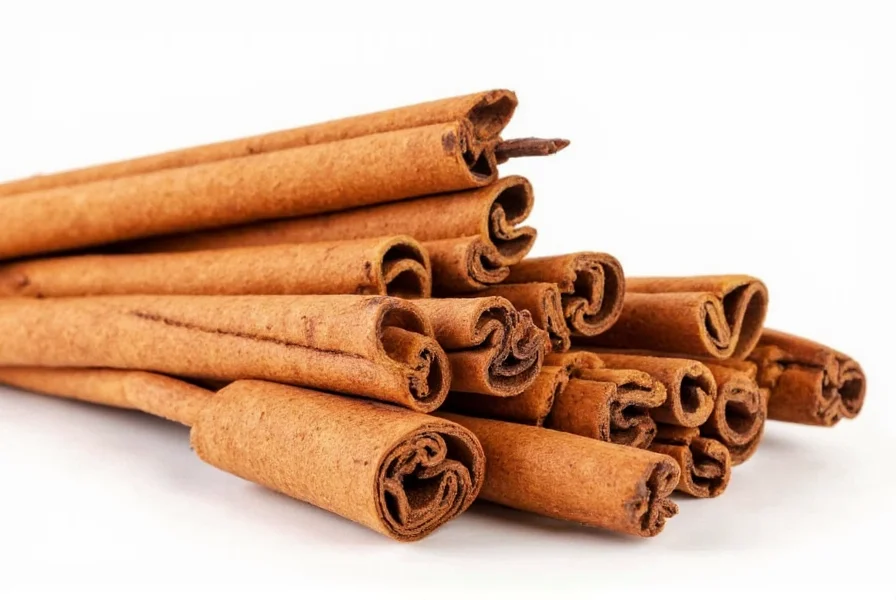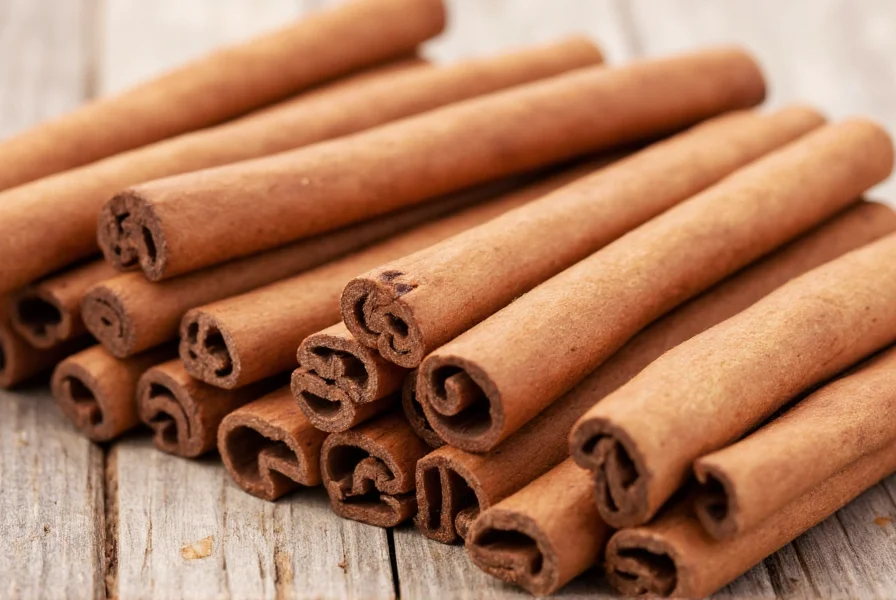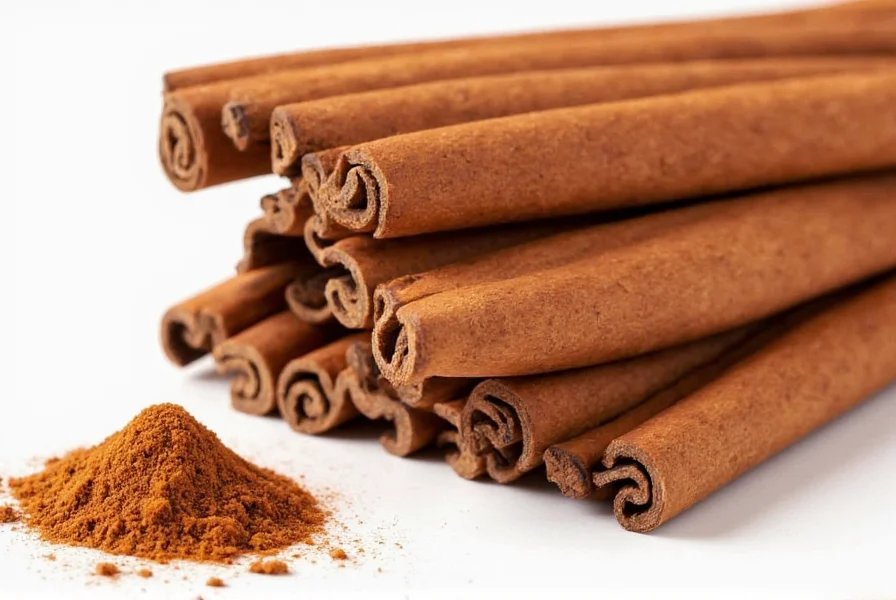Cinnamon sticks represent one of the world's oldest and most versatile spices, with historical use dating back to ancient civilizations. Unlike their ground counterpart, these intact quills preserve their essential oils and flavor compounds for extended periods, making them a pantry staple for both professional chefs and home cooks seeking authentic spice experience.
What Exactly Are Cinnamon Sticks?
Cinnamon sticks form when workers carefully peel the inner bark from young Cinnamomum tree branches. As the bark dries, it naturally curls into the familiar quill shape. This traditional harvesting method has remained largely unchanged for centuries, preserving the spice's integrity. Two primary varieties dominate the market:
| Type | Origin | Flavor Profile | Coumarin Content |
|---|---|---|---|
| Ceylon Cinnamon | Sri Lanka | Delicate, sweet, citrus notes | Very low |
| Cassia Cinnamon | China, Indonesia | Bolder, spicier, more intense | Higher |
Ceylon cinnamon, often labeled "true cinnamon," features multiple thin layers that scrape easily with a fingernail. Cassia, which constitutes most cinnamon sold in the United States, has a single thick, hard quill. Understanding this difference proves crucial when considering both flavor applications and health implications.

Cinnamon Sticks vs. Ground Cinnamon: Practical Differences
The choice between cinnamon sticks and ground cinnamon significantly impacts both culinary results and nutritional benefits. Whole sticks maintain their essential oils and volatile compounds far longer than pre-ground versions, which begin losing potency immediately after grinding.
When using cinnamon sticks in cooking, they impart flavor gradually through infusion rather than immediate dispersion. This makes them ideal for:
- Simmering in liquids (ciders, teas, broths)
- Infusing sugars or spirits
- Adding to rice or grain dishes during cooking
- Creating aromatic bases for curries and stews
For precise measurement, one standard cinnamon stick (2-3 inches) equals approximately 1/2 teaspoon of ground cinnamon, though this varies by thickness and variety. The conversion becomes particularly important when following recipes that specify one form but you only have the other available.
Maximizing Culinary Applications
Professional chefs prize cinnamon sticks for their controlled flavor release. Unlike ground cinnamon, which can burn easily, whole sticks withstand prolonged cooking without becoming bitter. Consider these expert techniques:
For cinnamon sticks in beverages, add them early in the brewing process to allow proper infusion. In coffee, they pair exceptionally well with dark roast varieties, while in tea they complement black teas more than delicate greens. When making mulled wine or cider, gently crack the sticks first to increase surface area without breaking them completely.
In baking applications, cinnamon sticks work best in recipes where they can be removed before serving, such as:
- Infusing milk for custards and puddings
- Adding to poaching liquid for fruits
- Placing in cake batters that will be unmolded

Scientifically Supported Health Benefits
Research indicates that cinnamon sticks contain cinnamaldehyde, the compound responsible for many of cinnamon's health properties. Unlike ground cinnamon, which may contain fillers or lose potency, whole sticks provide consistent concentration of active compounds.
Studies suggest potential benefits including:
- Blood sugar regulation - Multiple clinical trials show cinnamon may improve insulin sensitivity
- Antioxidant properties - Cinnamon ranks among the most antioxidant-rich spices
- Anti-inflammatory effects - May help reduce markers of inflammation
- Heart health support - Some research indicates positive effects on cholesterol levels
It's important to note that Cassia cinnamon contains higher levels of coumarin, which in excessive amounts may cause liver issues. Those consuming cinnamon regularly for health benefits should opt for Ceylon variety or moderate Cassia intake. The European Food Safety Authority recommends limiting coumarin intake to 0.1 mg per kg of body weight daily.
Proper Selection and Storage Techniques
When selecting quality cinnamon sticks, look for these characteristics:
- Bright, consistent color (light tan for Ceylon, reddish-brown for Cassia)
- Intact, tightly rolled quills without cracks
- Strong, sweet aroma when scratched
- Flexible enough to bend slightly without breaking
For optimal storage of cinnamon sticks, keep them in an airtight container away from light and heat. Properly stored, they maintain peak quality for 1-2 years, significantly longer than ground cinnamon's 6-month shelf life. Avoid refrigeration, as moisture causes deterioration. Check periodically by snapping a small piece - fresh sticks should break cleanly with a sharp sound, while stale ones crumble.
Creative Non-Culinary Applications
Beyond cooking, cinnamon sticks offer versatile household uses. Their natural antimicrobial properties make them valuable for:
- Creating natural air fresheners by simmering with citrus
- Adding to potpourri mixes for long-lasting fragrance
- Placing in drawers to repel insects naturally
- Using in DIY craft projects and holiday decorations
Many cultures incorporate cinnamon sticks into traditional practices. In some Asian traditions, they're used in ceremonial burnings, while in European folk medicine they've been employed in respiratory remedies. These applications leverage cinnamon's natural properties without making unsupported health claims.
Safety Considerations and Responsible Use
While generally recognized as safe, cinnamon sticks require mindful consumption. The primary concern involves coumarin content, particularly in Cassia varieties. Those with liver conditions or taking certain medications should consult healthcare providers before regular consumption.
When using cinnamon sticks medicinally, remember:
- Moderation is key - 1-2 sticks daily is generally considered safe
- Ceylon variety offers the same benefits with minimal coumarin
- Never substitute medicinal use for professional healthcare
- Consult your physician if managing blood sugar conditions
Frequently Asked Questions
What's the difference between cinnamon sticks and ground cinnamon?
Cinnamon sticks are the whole, rolled bark of the cinnamon tree, while ground cinnamon is the powdered form. Sticks maintain freshness longer, offer more subtle flavor infusion, and contain consistent concentration of compounds. One 2-3 inch stick equals approximately 1/2 teaspoon of ground cinnamon.
Which is better, Ceylon or Cassia cinnamon sticks?
Ceylon cinnamon (true cinnamon) has a more delicate flavor and very low coumarin content, making it safer for regular consumption. Cassia has a stronger, spicier flavor but higher coumarin levels. For daily use, especially for health purposes, Ceylon is generally preferred.
How do I use cinnamon sticks in tea or coffee?
Add one cinnamon stick per cup during brewing. For tea, place it in the infuser with tea leaves or directly in the cup. For coffee, add to the grounds before brewing or stir into the finished cup. Let it steep for 3-5 minutes for optimal flavor without overpowering.
How long do cinnamon sticks last?
Properly stored in an airtight container away from light and heat, cinnamon sticks maintain peak quality for 1-2 years. They last significantly longer than ground cinnamon (6 months) because the essential oils remain protected within the whole quill structure.
Can I substitute cinnamon sticks for ground cinnamon in recipes?
Yes, with adjustments. One standard 2-3 inch cinnamon stick equals approximately 1/2 teaspoon of ground cinnamon. For best results, simmer sticks in liquid components of the recipe, then remove before serving. In dry applications, grind sticks fresh using a spice grinder.











 浙公网安备
33010002000092号
浙公网安备
33010002000092号 浙B2-20120091-4
浙B2-20120091-4